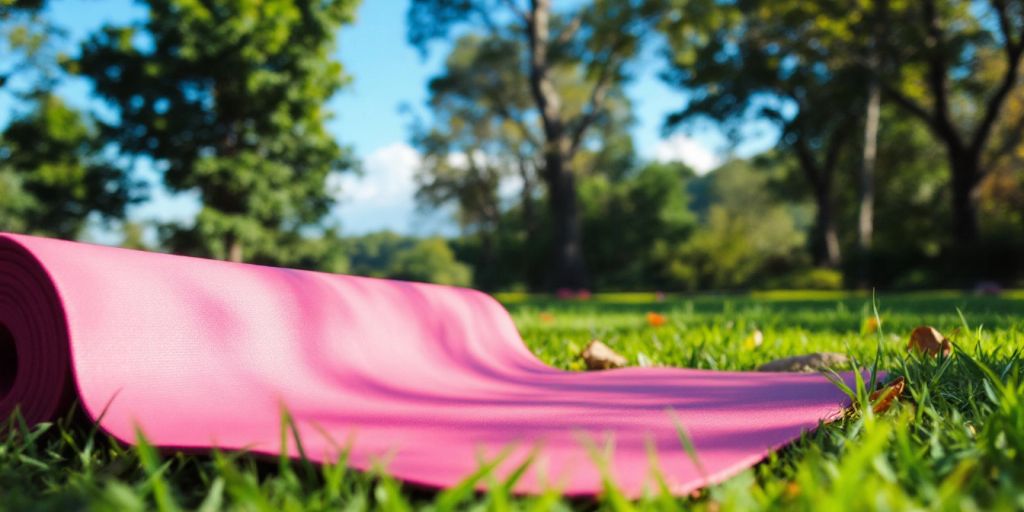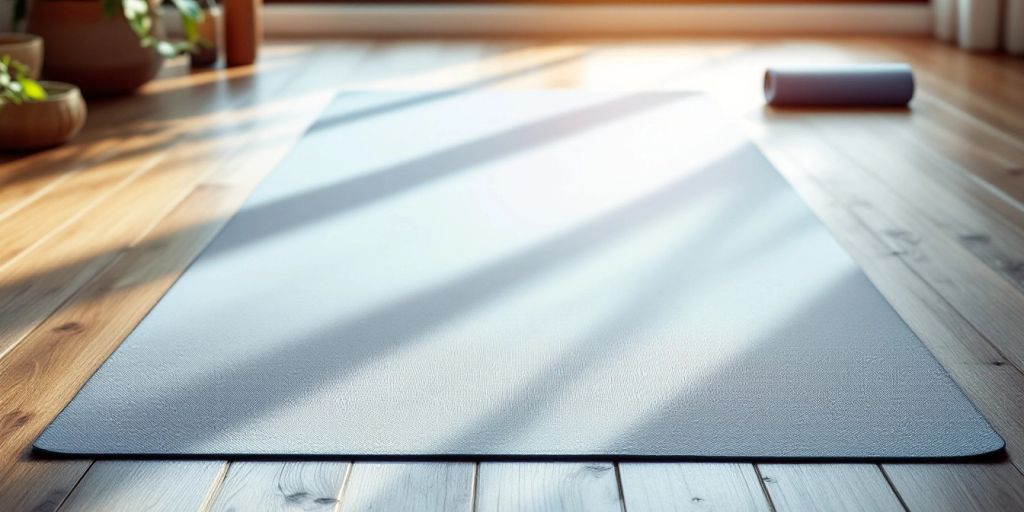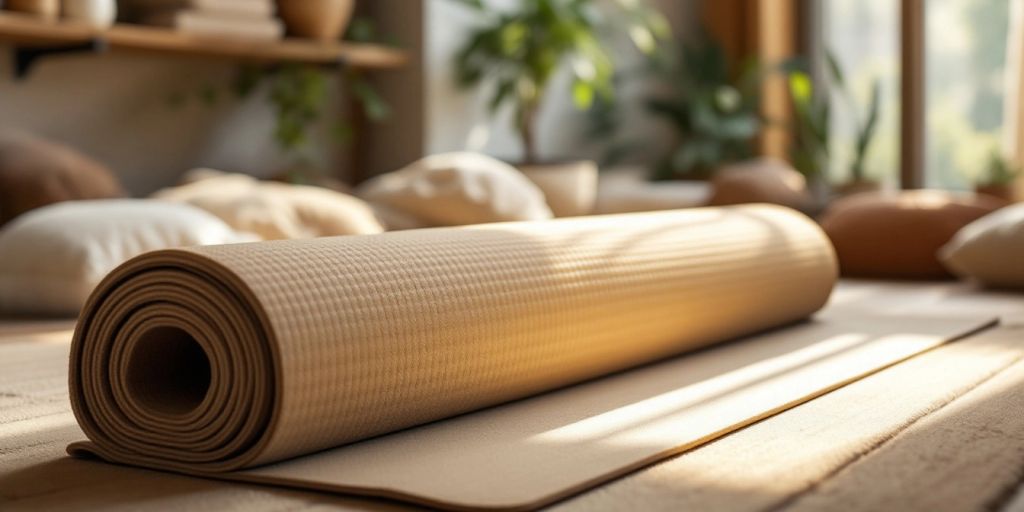
The Ultimate Guide to Choosing the Best Yoga Mat for Outdoor Use
Choosing the right yoga mat for outdoor use can make a big difference in your practice. With so many options available, it’s important to know what features to look for to ensure comfort, durability, and ease of transport. This guide will help you find the perfect mat for your outdoor sessions, whether you're practicing in a park, on the beach, or in your backyard.
Key Takeaways
- Look for mats that can withstand different weather conditions.
- Choose lightweight mats for easy carrying during your outdoor adventures.
- Ensure the mat provides enough comfort and support for various yoga poses.
- Consider eco-friendly materials if sustainability is important to you.
- Compare prices to find a mat that offers the best value for your budget.
Key Features to Consider When Choosing a Yoga Mat for Outdoor Use
When selecting a yoga mat for outdoor use, there are several important features to keep in mind. Durability is key since outdoor mats must withstand various weather conditions and surfaces. Here are the main features to consider:
Durability Against Outdoor Elements
- Look for mats made from materials that resist moisture, dirt, and UV rays.
- Check for reinforced edges to prevent wear and tear.
- Consider mats that are easy to clean after outdoor sessions.
Portability and Ease of Transport
- Choose lightweight mats that are easy to carry.
- Consider foldable options for compact storage.
- Look for mats with carrying straps or bags for convenience.
Comfort and Support for Various Poses
- Ensure the mat provides enough cushioning for comfort during poses.
- Look for mats with good grip to prevent slipping.
- Consider thickness based on your preferred level of support.
Environmental Impact and Sustainability
- Opt for mats made from eco-friendly materials to reduce your carbon footprint.
- Check for certifications that indicate sustainable practices.
- Consider the mat's packaging and its impact on waste.
Choosing the right outdoor yoga mat is essential for maintaining your practice while enjoying nature. A durable, portable, and eco-friendly mat can enhance your outdoor experience and keep you connected to your yoga journey.
Top Materials for Outdoor Yoga Mats

When it comes to choosing the right yoga mat for outdoor use, the material plays a crucial role. Here are some of the top materials you should consider:
Natural Rubber: Pros and Cons
Natural rubber mats are popular for their durability and grip. They provide excellent cushioning and are eco-friendly. However, they can be heavier and may not be suitable for those with latex allergies.
Cork: Benefits for Outdoor Practice
Cork mats are made from sustainable cork, which offers a non-slip surface. They are naturally antimicrobial, keeping mold and bad smells away. This makes them a great choice for outdoor yoga, especially in humid conditions. Cork mats are lightweight and provide a unique feel during practice.
PVC: Durability and Environmental Concerns
PVC mats are known for their durability and affordability. They can withstand various outdoor conditions, but they are not the most eco-friendly option. Many PVC mats can last a long time, but they may contain harmful chemicals that can be a concern for environmentally conscious yogis.
| Material | Durability | Eco-Friendliness | Weight |
|---|---|---|---|
| Natural Rubber | High | Moderate | Heavy |
| Cork | Moderate | High | Light |
| PVC | High | Low | Light |
Choosing the right material is essential for a satisfying outdoor yoga experience. Consider your personal preferences and values when making your decision.
Remember, the right mat can enhance your practice and connect you with nature!
Understanding the Importance of Grip and Texture
Non-Slip Surfaces for Stability
When practicing yoga outdoors, having a non-slip surface is crucial. A good grip helps you maintain balance and stability during poses, especially on uneven ground. Here are some key points to consider:
- Look for mats with textured surfaces that enhance grip.
- Natural rubber mats often provide better traction than synthetic options.
- Ensure the mat performs well in both dry and sweaty conditions.
Texture Preferences for Different Practices
Different yoga styles may require different textures. Here’s a quick guide:
- Gentle Yoga: A smoother texture can be more comfortable.
- Power Yoga: A grippier surface is essential to prevent slipping.
- Hot Yoga: Mats that absorb sweat and maintain grip are ideal.
Impact of Weather Conditions on Grip
Weather can affect how well your mat grips the ground. Consider these factors:
- Humidity: High humidity can make some mats slippery.
- Temperature: Cold mats may not provide the same grip as warm ones.
- Surface: Grass or sand can change how your mat performs.
Choosing the right mat is essential for a safe and enjoyable outdoor yoga experience. A good grip can make all the difference in your practice, allowing you to focus on your poses without worrying about slipping.
Portability: Finding the Right Balance Between Weight and Functionality

When it comes to outdoor yoga mats, portability is key. You want a mat that is easy to carry without sacrificing comfort or functionality. Here are some important points to consider:
Lightweight Mats for Easy Carrying
- Look for mats that weigh around 1-3 pounds. These are easier to transport.
- A mat like the Yogo Ultralight, weighing just 2.3 lbs, is perfect for travel.
- Consider the thickness; thinner mats are lighter but may not provide enough cushioning.
Foldable vs. Rollable Mats
- Foldable mats can save space and are often easier to pack.
- Rollable mats are more common and can offer better support during practice.
- Think about your storage options; some mats come with straps for easy carrying.
Balancing Thickness and Portability
- A thicker mat (around 4-6 mm) offers more comfort but can be heavier.
- A thinner mat (around 2 mm) is lightweight but may not be as supportive.
- Find a balance that works for your practice and travel needs.
Choosing the right mat can enhance your outdoor yoga experience. A lightweight, portable mat allows you to practice anywhere, making it easier to stay connected to your routine while on the go!
Eco-Friendly Options for the Conscious Yogi
Sustainable Materials and Certifications
- Choose mats made from sustainable materials like natural rubber, jute, or organic cotton. These materials are biodegradable and renewable, helping to reduce your environmental footprint.
- Look for certifications such as OEKO-TEX, which ensures that the mat is free from harmful substances.
- Consider brands that are committed to eco-friendly practices in their production processes.
Brands Committed to Eco-Friendly Practices
- Manduka: Known for their premium non-slip yoga mat made from sustainable jute and natural rubber, ensuring durability and eco-friendliness.
- Liforme: Offers mats that are biodegradable and PVC-free, aligning with sustainable practices.
- Yoloha: Specializes in cork yoga mats, which are made from sustainably harvested cork and recycled rubber.
Recyclable and Biodegradable Mats
- Many eco-friendly mats are designed to be recyclable or biodegradable, reducing waste in landfills.
- When selecting a mat, check if the packaging is also eco-friendly to minimize waste.
- Investing in a durable mat means you won’t need to replace it often, which is better for the environment.
Remember, choosing an eco-friendly mat not only supports your yoga practice but also contributes to a healthier planet. Every small step counts towards sustainability!
Price vs. Value: Making an Informed Decision
Budget-Friendly Options with Quality
When looking for a yoga mat, it’s important to find one that fits your budget but still offers good quality. Here are some options:
- Yoga Accessories 1/4" Extra Thick Deluxe Yoga Mat: Priced at $26, this mat is durable and provides good support.
- Gaiam Essentials Thick Yoga Mat: At around $22, it’s lightweight and comes with a carry strap, making it easy to transport.
- JadeYoga Harmony Mat: A mid-range option at $79, it’s made from natural rubber and is eco-friendly.
Premium Mats and Long-Term Investment
Investing in a higher-priced mat can be beneficial in the long run. Consider these:
- Manduka PRO Yoga Mat: Costs about $120 but is known for its durability and comfort.
- Liforme Yoga Mat: At $140, it offers unique features like the AlignForMe system for better grip.
User Reviews and Satisfaction Ratings
User feedback can help you make a better choice. Here’s a quick comparison of some popular mats:
| Mat Name | Price | User Rating | Key Features |
|---|---|---|---|
| Yoga Accessories Deluxe Mat | $26 | 4.5/5 | Extra thick, durable |
| Gaiam Essentials Thick Mat | $22 | 4.2/5 | Lightweight, carry strap |
| JadeYoga Harmony Mat | $79 | 4.6/5 | Eco-friendly, good grip |
| Manduka PRO Yoga Mat | $120 | 4.8/5 | Highly durable, excellent support |
| Liforme Yoga Mat | $140 | 4.7/5 | AlignForMe system, eco-friendly |
Choosing the right yoga mat is not just about the price; it’s about finding the best value for your needs.
Final Thoughts on Your Outdoor Yoga Mat Journey
Choosing the right yoga mat for outdoor use is important for enjoying your practice. Think about what matters most to you, like how tough the mat is, how easy it is to carry, and if it feels good to use. If you want a strong and high-quality mat, the Manduka PRO is a great choice. For those who care about the environment, the Liforme and Yoloha Cork mats are fantastic options. If you're on a budget, the Gaiam Essentials mat gives you good support without breaking the bank. Lastly, if you want a mix of comfort and easy transport, the Jade Yoga Harmony Mat is a solid pick. Take your time to explore these options and find the mat that fits your needs. Remember, every time you practice, you’re taking steps toward peace and balance in your life. Happy practicing!
Frequently Asked Questions
What should I look for when buying a yoga mat for outdoor use?
When choosing a yoga mat for outdoor practice, consider its durability, weight, comfort, and how easy it is to carry. A good mat should handle different weather conditions and provide enough grip.
Are outdoor yoga mats heavier than regular mats?
Yes, many outdoor yoga mats are a bit heavier because they are made with thicker materials for better durability. However, there are lightweight options available too.
Can I use my indoor yoga mat outside?
You can, but it might not last long in outdoor conditions. Indoor mats aren’t always made to handle dirt, moisture, and sun exposure.
How do I clean my outdoor yoga mat?
To clean your outdoor mat, wipe it down with a mild soap solution or a special mat cleaner, then let it air dry completely before storing it.
What thickness is best for outdoor yoga mats?
A thickness of 1/4 inch or more is usually best for outdoor mats. This offers good cushioning and support for various poses.
Are there eco-friendly outdoor yoga mats?
Yes, many brands make eco-friendly outdoor yoga mats using sustainable materials. Look for mats made from natural rubber, cork, or other recyclable materials.


